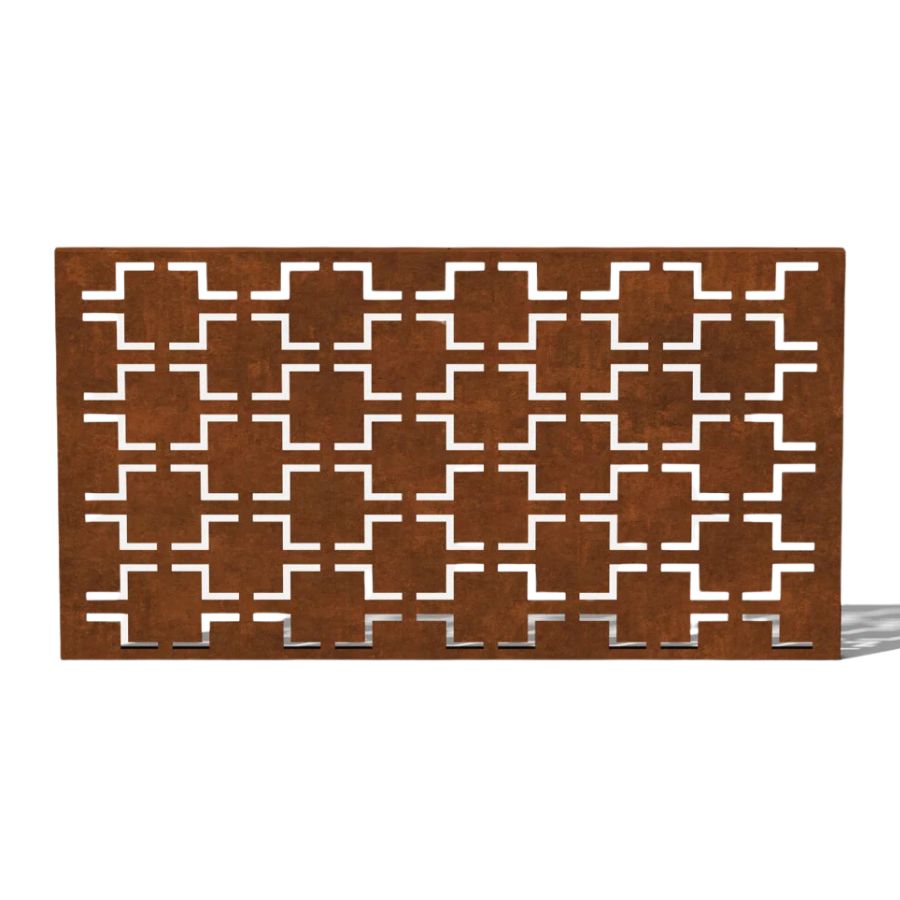7 Tricks That Will Help Downplay Your Backyard's Worst Features, According to Landscape Designers
If you're trying to conceal unsightly elements in your backyard, these are the landscaping tricks green-thumbed experts swear by


Almost every backyard will have an unloved area that needs a bit of TLC or something that's a necessity for your home, but isn't great to look at. With urban yards that are short on space, or busy family gardens that feel a little on the unkempt side, those unsightly areas become a little more noticeable.
If your backyard could do with some tidying, there are some clever landscaping tricks and tools that landscaping experts employ time and time again to help conceal those outdoor eyesores. Here are their top tips.
1. Get creative with hardscaping

Creative hardscaping might be your best bet for concealing those less attractive backyard features. "Berms" are one way that designers create height to stop a yard feeling flat, but it can also help hide unsightly elements, too. Landscaping berms are mounded hills of soil that raise the ground in your garden for extra curvature. It's an easy task to undertake too, you might just need some soil and new turf to disguise a certain aspect of the space.
'The placement of pathways and patios can also help to direct and draw people into the more desirable areas,' adds Cate Singleton, Tilly Design's Director of Design. 'Organizing these spaces in a way that leads views away from the eyesores is the key.'
As well as clever paving, back or front yard landscaping with rocks can add height and depth, and conceal any pipes, generators, or unsightly features that need covering. Consider large boulders that bring texture, or even smaller-scale pea gravel, like this from Amazon, that can cover anything.
2. Consider incorporating water
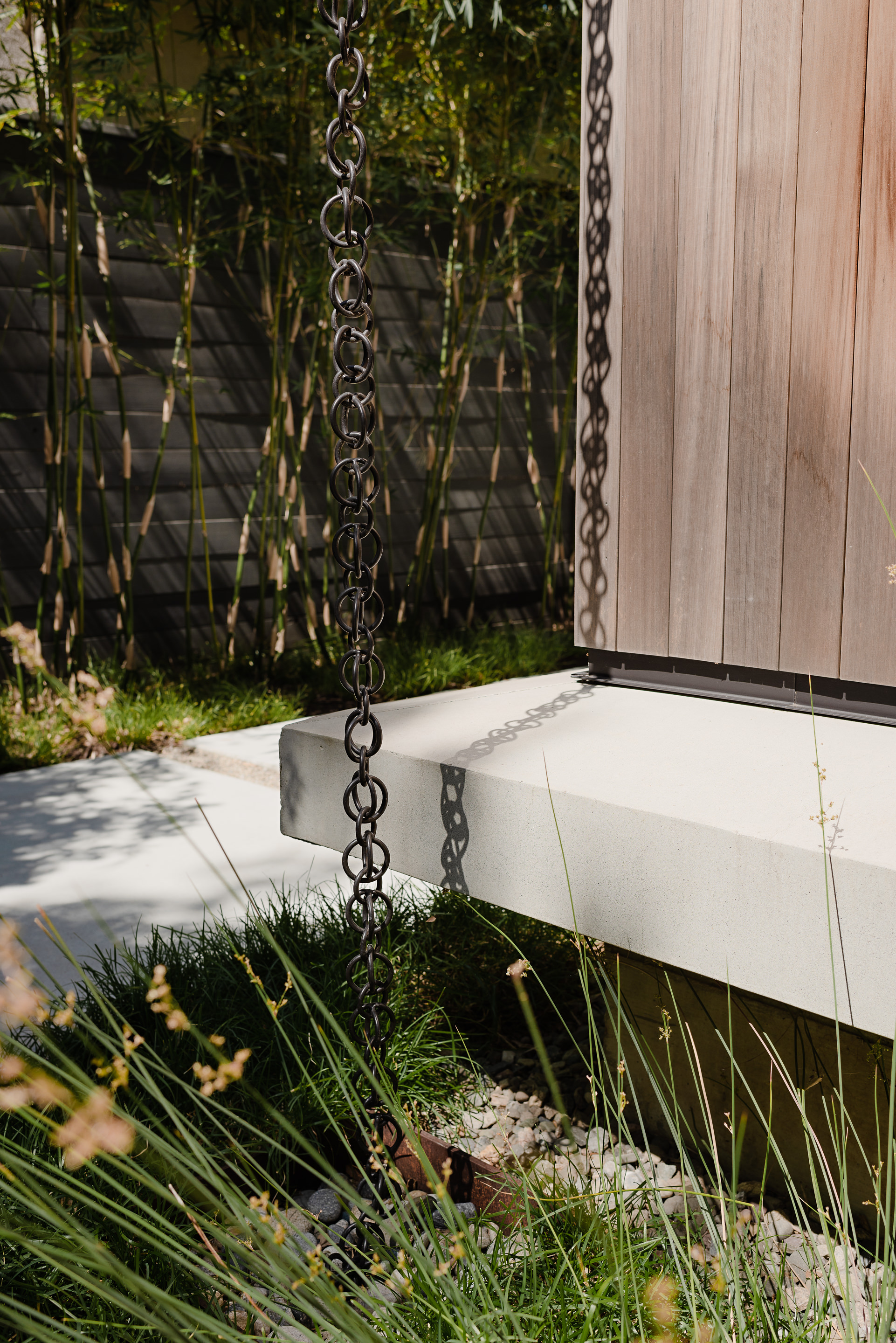
Water is a wonderful element to embrace in your backyard. Water engages your senses and brings a feeling of calm. Instead of focusing on the visuals of your backyard, by incorporating another sense - sound - into the space, you will help distract any unloved parts of the garden. Plus, it will help pull your ear away from unwanted noises, whether that's cars or neighbors.
'If you’re in an urban area or live next to a busy road, you may experience a disruptive amount of traffic noise while out in your backyard. A small fountain to block out unwanted noise,' says Kat Aul Cervoni, landscape designer and founder of Staghorn NYC and The Cultivation by Kat.
The Livingetc newsletters are your inside source for what’s shaping interiors now - and what’s next. Discover trend forecasts, smart style ideas, and curated shopping inspiration that brings design to life. Subscribe today and stay ahead of the curve.
'My favorite fix is to add a babbling water feature to your patio, backyard deck or terrace - specifically one with a small fountain feature which creates white noise when on.'
Water's power can be harnessed too to make a positive out of a negative, points out Kat. 'Add a rain garden where you’ve got a low or wet spot. If you’ve got a low or perpetually damp spot in your backyard that can’t be amended, make lemonade out of lemons and turn it into a rain garden with a rain chain, like this from Walmart, that moves water to where it's needed.' Polished river stones or pea gravel used as mulching can make your rain garden feel more pond or creek-like and add a beautiful effect.
3. Distract through color

Another way to downplay your yard's worst features is to emphasize the color and texture. Pick colorful backyard plants that distract the eye and choose furniture that unites the space with a cohesive scheme.
'Utilizing color and texture and creating a landscape with vibrant tones will help to hold the gaze of the viewer,' says Cate. 'Playing with contrasting colors and textures can also create depth in the landscape and draw attention away from the unattractive elements.'
Look to backyard color trends and dream up a scheme with outdoor furniture. Try shades of golden teak, accompanied by soft furnishings for color pops. Alternatively, go for resilient powder-coated aluminum outdoor furniture in your favorite colors.
4. Think about the view
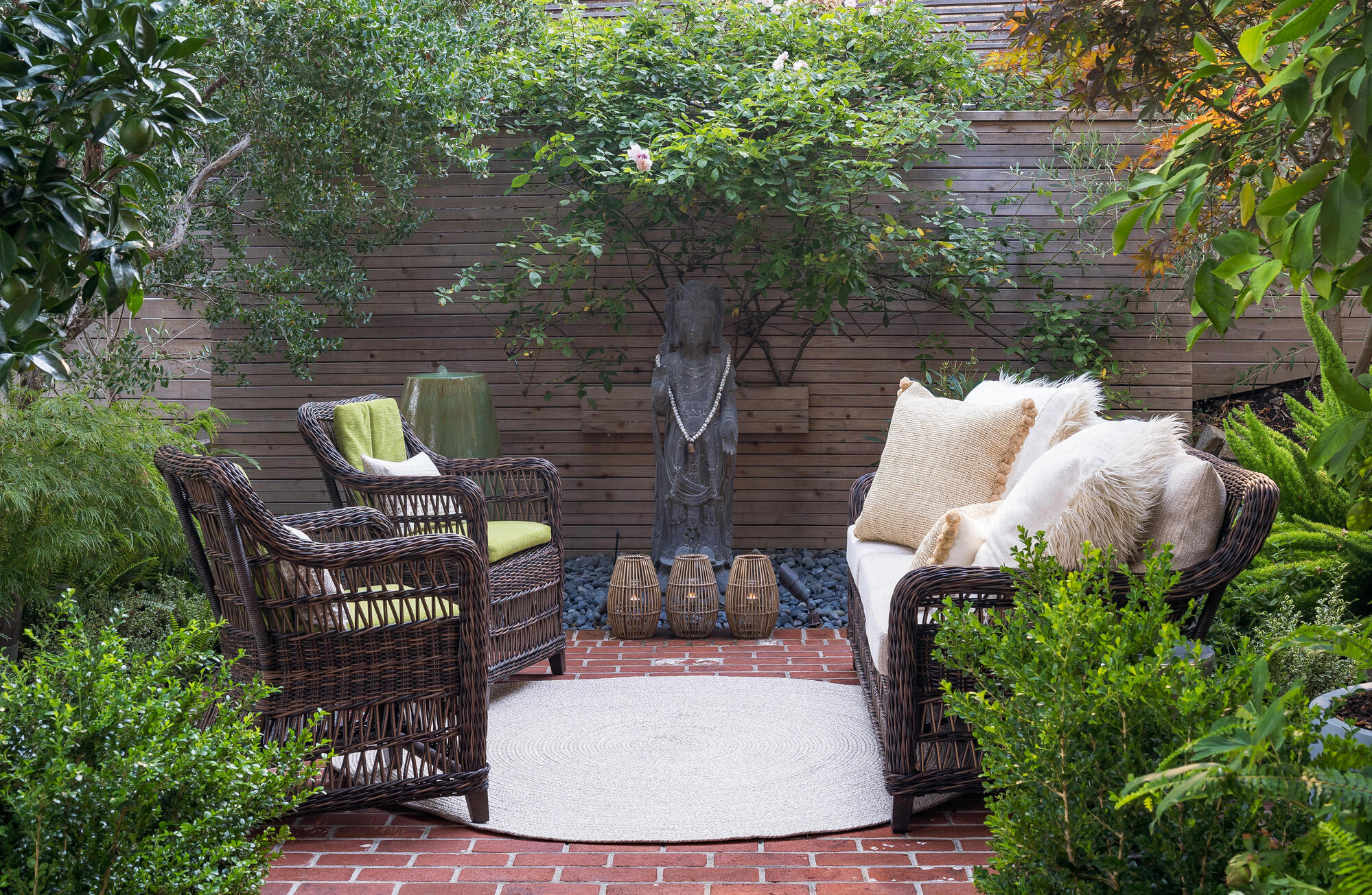
Just like with your interiors, sometimes the easiest solution might be to rearrange the space so that the focus is elsewhere. 'Concentrate on the spatial arrangement of the garden elements,' says Alexander Symes of Alexander Symes Architect.
'Creating focal points is a great way to distract,' says Cate. 'It will help to direct views away from features that you’d like to mask. This can be done with water features, seating areas, and fire pits. If you are designing a seating nook or firepit, make sure the outlook is focused on the view you want to see.'
Consider if your outdoor bench is facing the right way too. Think about the shade or dappled light that hits the space - what mood does it evoke and do you want to reconfigure your bench to focus on a water feature or a nearby tree instead?
5. Invest in a privacy screens

A privacy screen can be neatly placed in your backyard to meet your privacy needs, but it also has the added benefit of distracting from an unsightly feature of your outdoor space.
'A screen or fence like a simple elegant palisade fence in timber or metal may be needed to block out an unsightly element that can’t be changed in the garden,' recommends Alexander.
The best outdoor privacy screens are decorative and there are so many options to pick from that will suit your backyard's aesthetic, from minimalist backyard timber styles to more decorative cast iron designs that have a more traditional feel. 'Lattices can also be used to block out unattractive areas,' says Cate, 'while also providing support for flowering vines.' This example by FYC Architects has gone green with their screen, blocking the space with a tall planter to house tall plants.
6. Use plants to your advantage
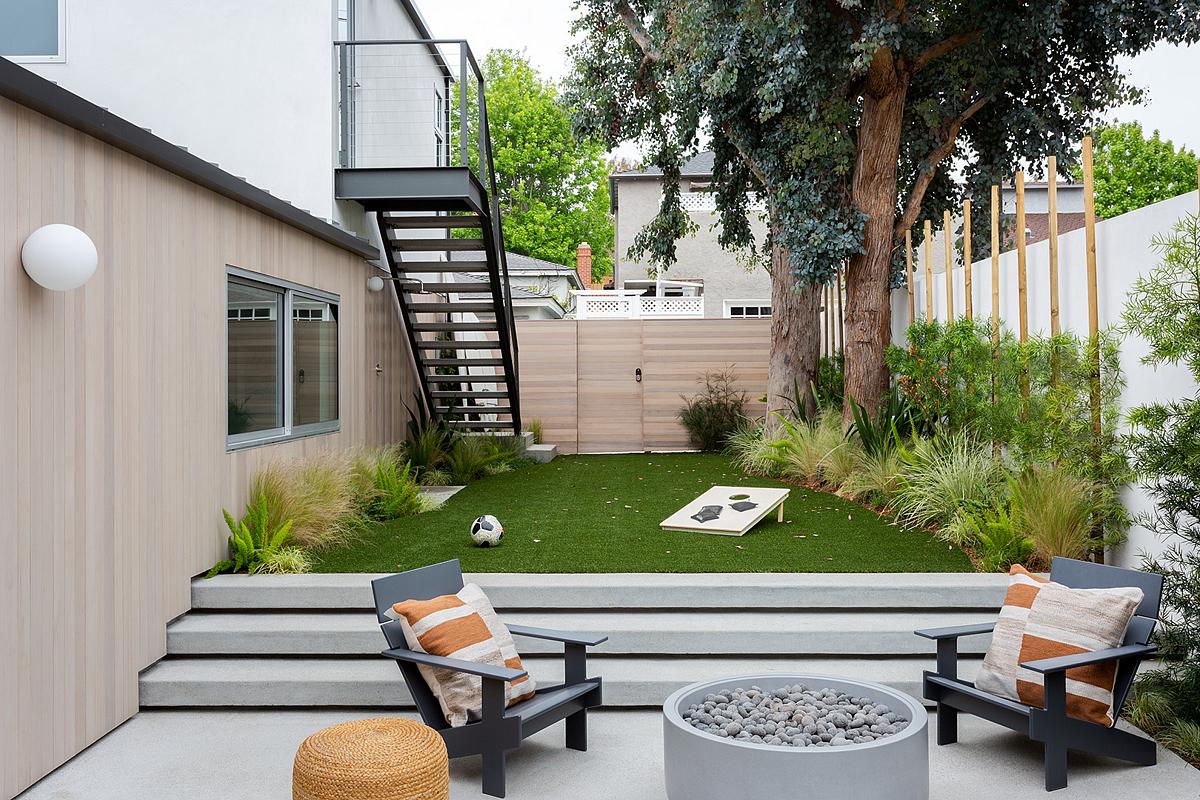
If you're trying to hide a neighbor's unsightly wall or block an offending view, it might be best to rely on nature to help conceal the eyesore.
Alexander recommends using clever plantings to wind their way up your wall to help cover it and distract the eye. 'If you have a large wall you could consider a plant that might cover it directly like Ficus pumila (also known as Creeping Fig, which you can shop at Amazon) or Parthenocissus tricuspidate (Boston Ivy, like this variety from Walmart).'
You might need some help from landscaping structures to support the vines. 'Tensioned stainless steel wires at 30-40cm intervals can be used to grow vines and climbers like: Hardenbergia comptoniana (Native Wisteria), Hoya australis (Wax Vine), Pandorea pandorana (Snow Bells) Muehlenbeckia complexa (Maidenhair Vine).'
A grapevine is a hardy trailing plant that would make a great addition to your backyard. They are known to thrive in warmer climates, but they grow well in cooler climates too, with the bark twisting its way up any garden structures with ease. Just be wary that during the winter, the vine will conceal less than in the summer, when it's full with abundant bunches of grapes and thick, glossy leaves.
'On a house I recently purchased with a big blank wall on the back of the garage, I hung a pair of inexpensive willow branch trellises and used them for climbing ivy,' adds Greg Howe of Searl Lamaster Howe Architects. 'Within just a few weeks the plantings had matured enough to create a focal point out of what previously was a very boring area.'
7. And conceal with tall trees and shrubs
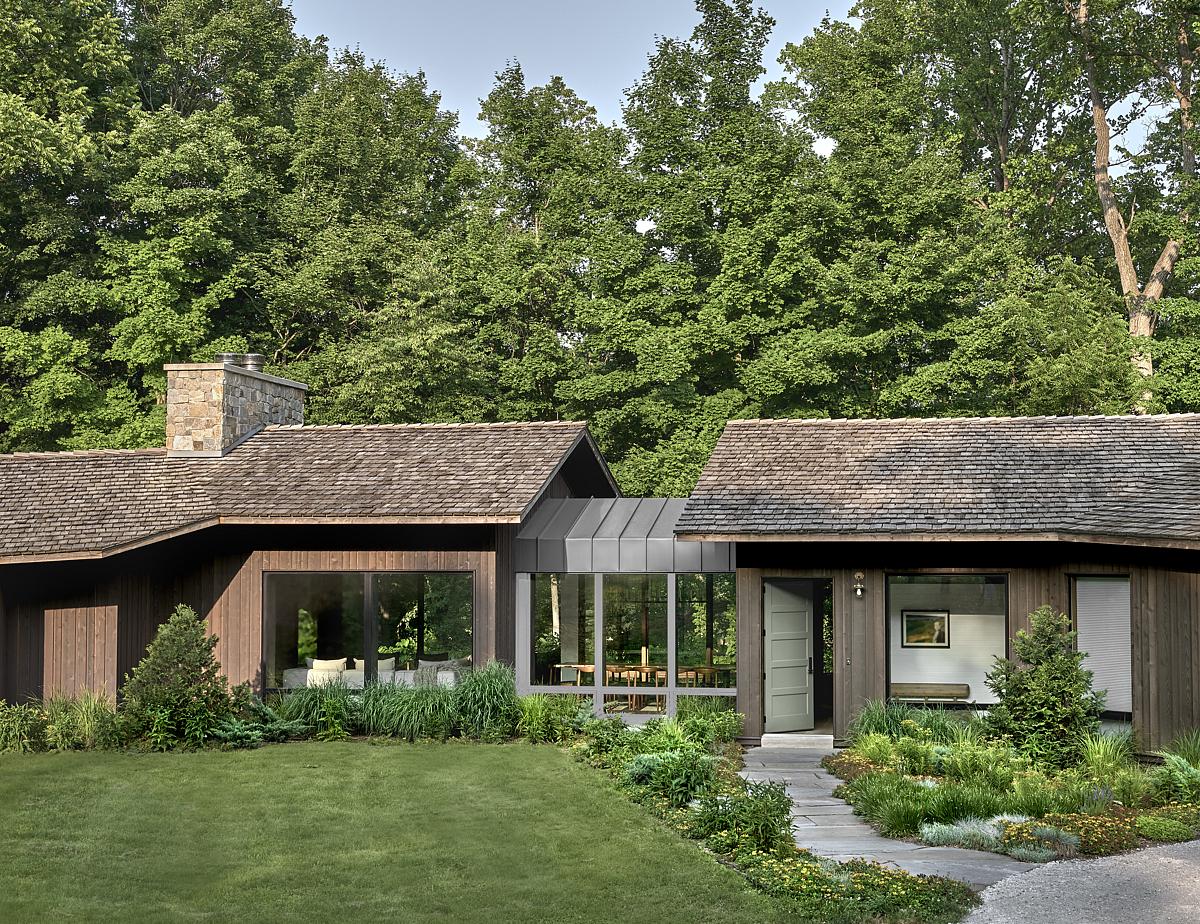
Look for shrubs, trees and pick from the best flowering bushes for privacy too. 'Strategic placement of screening trees and shrubs is a good idea,' says Cate. 'Large, dense evergreen trees and shrubs can be utilized to screen a variety of problem areas in the yard whether it is a utility, power lines, or even issues on the façade of the residence.'
'On the Buchanan house project (above), evergreens were used to hide a bulky emergency generator and a utility meters,' explains Greg. 'To avoid a sense of contrivance, a mix of native deciduous trees were added in to instill a more natural character.'
Give your backyard some love with these three buys

Former content editor at Livingetc.com, Oonagh is an expert at spotting the interior trends that are making waves in the design world. She has written a mix of everything from home tours to news, long-form features to design idea pieces, as well as having frequently been featured in the monthly print magazine. She is the go-to for design advice in the home. Previously, she worked on a London property title, producing long-read interiors features, style pages and conducting interviews with a range of famous faces from the UK interiors scene, from Kit Kemp to Robert Kime. In doing so, she has developed a keen interest in London's historical architecture and the city's distinct tastemakers paving the way in the world of interiors.
